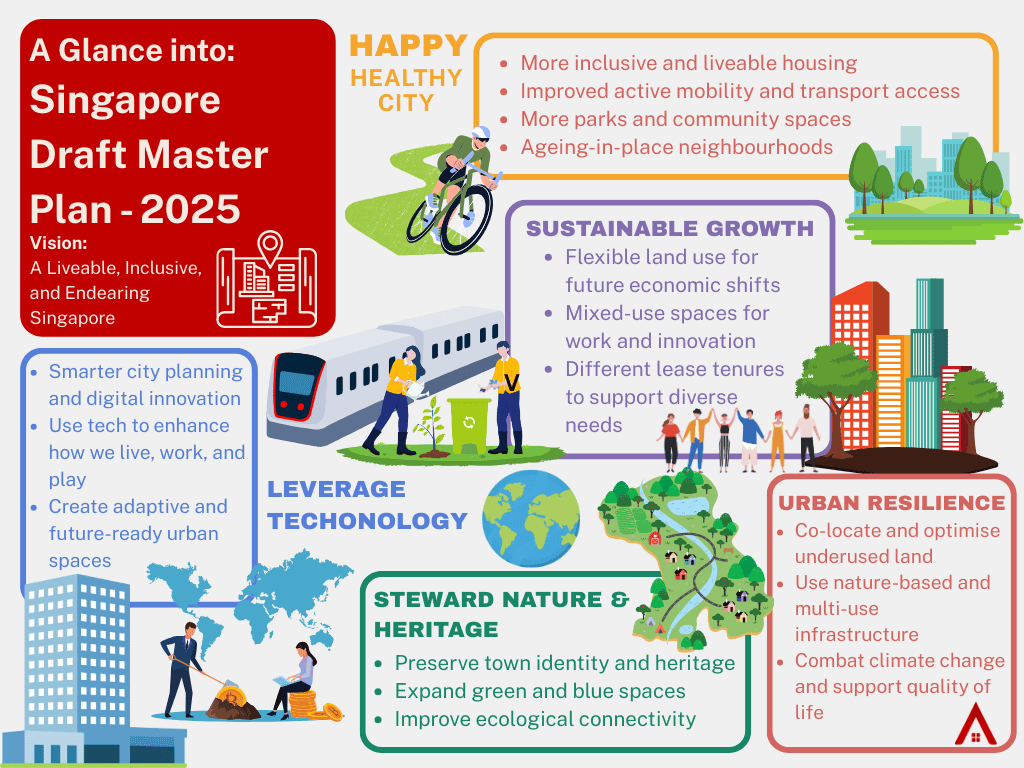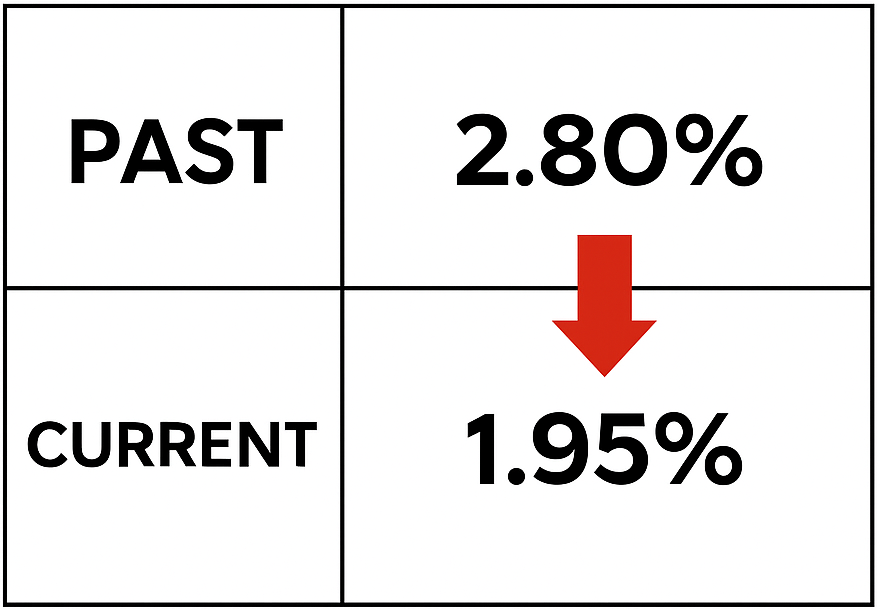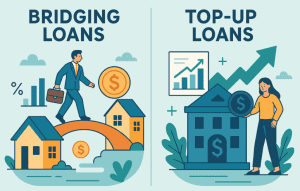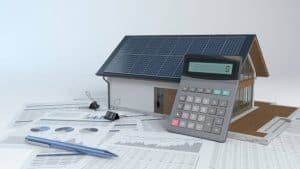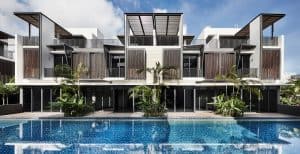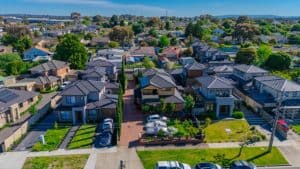The URA Master Plan is more than just a zoning map — it’s your cheat sheet to understanding how Singapore will grow over the next 10 to 15 years.
Whether you’re buying your first flat, investing in private property, or planning to refinance, the URA Master Plan 2025 gives you valuable insights into land use, future amenities, and growth zones that directly impact your property’s value.
In this guide, we’ll show you how to read the URA space master plan, decode zoning legends, and use tools like gross plot ratio and change of use rules to make smarter real estate decisions.
Want to know where the next hotspot is? Start here.
What Is the URA Master Plan and Why It Matters
The URA Master Plan 2025 is one of the most powerful tools property buyers and investors in Singapore can use — yet few actually take the time to study it.
Created by the Urban Redevelopment Authority, this nationwide zoning plan reveals how land will be developed, what amenities are coming up, and where infrastructure will transform entire neighbourhoods. If you want to stay ahead of market trends or plan your next home purchase wisely, this is where to start.
Here’s a tip for you: Pairing URA map research with mortgage planning helps you stay ahead of price jumps — especially in transformation zones.
What Exactly Is the URA Master Plan?

The URA Master Plan is a statutory land use guide. It shows how every parcel of land in Singapore will be zoned and developed — whether for residential, mixed-use, parks, transport, or industrial purposes.
By reading the URA space master plan, buyers can evaluate if a quiet estate today might become a bustling hub tomorrow. This is especially useful if you’re comparing long-term property value between estates like Woodlands and Queenstown.
Want to see how future developments might affect your current home value or refinancing decision? Check out the mortgage loan repayment calculator to project your monthly payments based on future loan scenarios
How It Differs from the Concept Plan or LMP
A quick breakdown of the difference:
URA Master Plan vs Concept Plan: Key Differences in Planning Horizon
| Plan Type | Timeline | Use Case |
|---|---|---|
| Concept Plan / LMP | 40–50 years | High-level future planning vision |
| URA Master Plan | 10–15 years | Specific, short-term land use zoning plans |
The URA Master Plan is updated every 5 years and has real implications for new HDB launches, condo developments, and even where MRT lines go. Before you commit to any home loan, it’s smart to pair URA insights with the right mortgage product.
Learn how Singapore mortgage brokers can help you match your financial plan with where you expect the neighbourhood to head.
Why Every Property Buyer and Investor Should Care
If you’ve ever bought a home and found out later that a new highway or MRT line was planned behind it — that’s a mistake the URA Master Plan can help you avoid.
Here’s what you can uncover:
- Whether that park view is protected or temporary
- If future rezoning might allow a condo launch near your flat
- When commercial activity will raise resale value in your block
Use case:
Some buyers saw strong capital appreciation in areas like Lentor and Tanjong Katong — both flagged early in the URA Master Plan with zoning and transport upgrades.
Before you shortlist a unit or plan a property purchase, check zoning and speak with a mortgage consultant. Whether you’re eyeing an HDB loan or need advice on refinancing your current home loan, pairing both tools gives you a major edge.
Also, explore our property blog for expert tips on timing your move with upcoming launches and market trends.
External References You Can Explore:
How to Use the URA Space Master Plan Map
Understanding how to use the URA space master plan map can give you a real edge when buying or investing in property. Most people focus only on the current state of an area — but this map shows what’s coming.
Whether you’re checking if your next BTO faces a future highway or comparing investment potential between two resale flats, this is your go-to resource.
What the URA Zoning Colours and Legends Mean
The map is colour-coded based on zoning types, and each one has major implications for surrounding land value. Here’s a quick breakdown:
URA Zoning Colours and Their Impact on Property Value
| Zone Type | Colour Code | What It Means |
|---|---|---|
| Residential | Yellow/Orange | HDBs, condos, landed housing |
| Commercial | Blue | Malls, offices, shops |
| Mixed-Use | Purple | Residential + commercial (high upside) |
| Park/Open Space | Green | Protected greenery or parkland |
| Reserve/Utility | Grey | Future use, not yet zoned |
Remember to pay attention to the green buffer zones — they can indicate quieter surroundings or planned park connectors, which often boost resale desirability.
If you’re planning to purchase near mixed-use or commercial zones, it might be wise to compare your loan options early. Some banks offer better rates for homes in high-growth areas. See the latest DBS home loan and OCBC home loan packages to get started.
How to Search for a Specific Address or Parcel
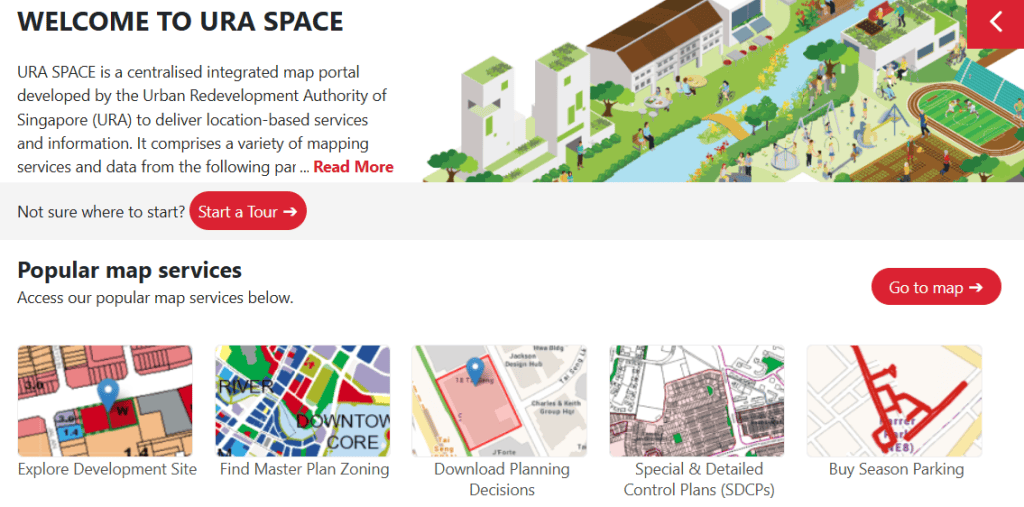
The URA SPACE portal lets you zoom in on any address in Singapore and check the zoning, building height control, and even planned roads or MRT stations.
Here’s how:
- Visit the official URA Map Service
- Enter the address or postal code in the top-left search bar
- Click the parcel and check the zoning info, GPR, and overlay notes
You’ll also see if there are restrictions (e.g. schools, conservation buildings) that could affect future developments.
Bonus Tip: This tool is especially useful when comparing two similar properties. One might look identical today — but its future could be very different based on URA data. Always check before making financing decisions.
You can also use our buyer stamp duty calculator to budget more accurately when narrowing down options.
How to Read Gross Plot Ratio (GPR), Building Height, and Notes
One of the most overlooked tools in the URA map is the Gross Plot Ratio (GPR) — a measure of how densely a site can be developed. Here’s what it generally means:
- 1.4 GPR → Low-rise housing (landed homes, low-density condos)
- 2.8 GPR → Mid-rise condos (common in suburban areas)
- > 4.0 GPR → High-density, often near MRT stations or city fringe
Also look at:
- Height restrictions: Some zones cap buildings at 12 or 36 storeys.
- Overlay notes: These may flag future transport lines or “subject to detailed planning” zones.
This data can tell you if your quiet block might be overshadowed by a 40-storey condo in the future — or if your resale flat is likely to benefit from surrounding upgrades.
If you’re currently on an HDB loan but considering switching to a bank loan before your area undergoes transformation, use our refinance HDB loan guide to see what makes the most financial sense.
Real Ways the URA Plan Affects Property Value
The URA Master Plan doesn’t just show where parks or schools will be built — it shapes long-term property value.
Whether you’re buying your first home or eyeing your next investment, understanding what’s changing around your property can directly impact your returns.
What Rezoning Means for En Bloc or Price Growth
Rezoning signals that an area is about to transform. When land is reclassified — say, from low-density to mixed-use — it opens the door for taller buildings, new amenities, and more vibrant communities. For homeowners, that can mean:
- Higher demand for existing units
- Better en bloc potential
- A lift in resale prices as the area matures
Remember to always check the URA map before buying a resale flat in older estates like Kallang or Geylang. If you spot recent zoning changes, it may be time to explore HDB home loan options to enter before prices spike.
What Are ‘White Sites’ and Why Investors Love Them
‘White sites’ are flexible-use plots designated for future development — often in prime growth zones. Investors watch them closely because they tend to:
- Sit near MRT stations or commercial hubs
- Offer high gross plot ratios (GPR)
- Attract major developers when launched
For example, sites near the future Greater Southern Waterfront or Jurong Lake District often start out as white sites. If you’re considering entering the market before redevelopment kicks in, see if a private property loan fits your investment strategy.
How Upcoming MRT Lines and Hubs Change the Game
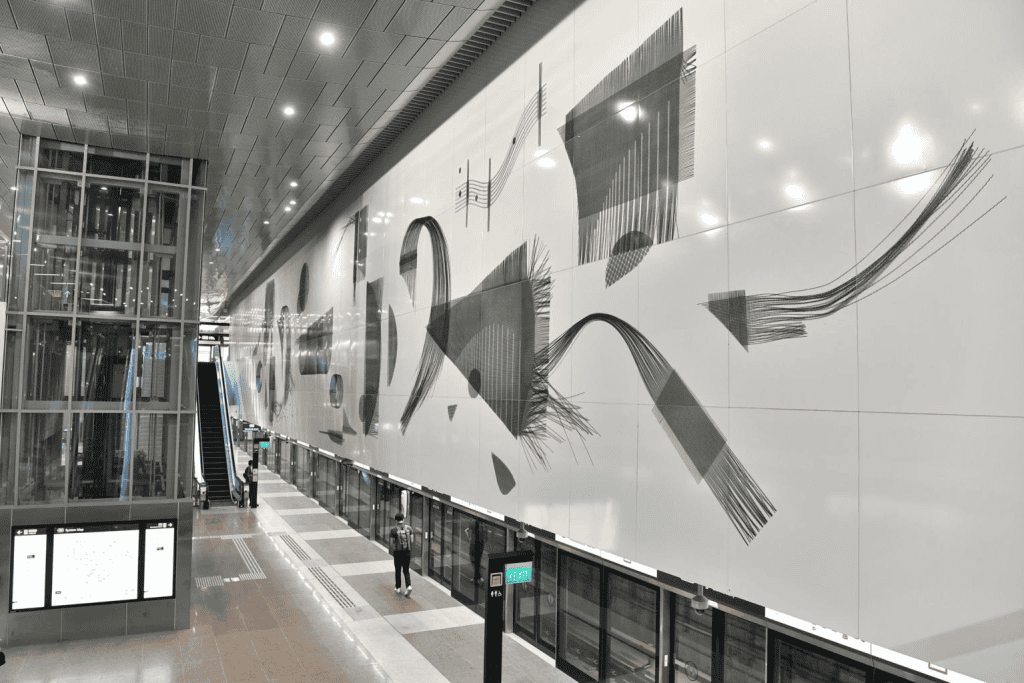
New MRT lines can radically change how liveable and valuable a neighbourhood becomes. Areas once considered “ulu” (remote) can become the next big thing once connected.
Just look at:
Lentor and Mayflower after the Thomson-East Coast Line
- Tengah and Jurong with the Jurong Region Line
When URA overlays show future MRT stations, that’s often a cue to act — or refinance if you already own nearby. Use our refinance home loan guide to optimise your current package before demand and prices catch up.
How to Spot Future Hotspots Using the Master Plan
Want to find the next Bishan or Punggol before it becomes the talk of the town? The URA Master Plan gives you all the early signals — if you know where to look. From transport links and green corridors to zoning overlays and land sales, future hotspots often announce themselves years in advance.
Look for Planned Transport, Parks, and Commercial Zones
One of the fastest ways to spot an up-and-coming area is by zooming in on new MRT lines, park connectors, and commercial centres in the URA map overlays. These amenities tend to raise demand — and prices.
Key hotspots from past URA maps:
- Woodlands Regional Hub → boosted resale and rental yield
- Bayshore MRT (TEL) → upcoming white sites = price potential
- Tengah’s car-free town centre → future-proofed for green living
Here’s what to look for:
- Transport overlays (future MRTs or bus interchanges)
- Planned neighbourhood centres or shopping clusters
- Linear parks or green corridors
Expert Tip: If you’re buying in an area that will see a transport or park upgrade in the next 3–5 years, don’t wait. Lock in a bank loan now before prices catch up — especially if you’re eyeing resale units nearby.
Use ‘Change of Use’ to Track Potential Upzoning Areas

URA’s Change of Use guidelines let you track when land may be reclassified for higher-value purposes. For example, a warehouse site rezoned for residential or mixed-use could be a hidden gem waiting to pop.
You can often find clues here:
- Industrial zones near new MRT lines
- Low-density landed areas with “subject to detailed planning” notes
- Commercial plots reclassified as mixed-use or white sites
These changes aren’t immediate, but they’re early warning signals of future activity. Pair them with property research and use a mortgage broker to map out your financing path ahead of time.
Combine URA Plan with HDB BTO Launches or GLS Sites
Another underrated method? Cross-referencing URA zoning with recent BTO launch locations or upcoming GLS (Government Land Sales) sites. These tend to align with areas earmarked for growth — and often come with bonus infrastructure.
Use this strategy:
- Track where BTO launches keep recurring (e.g. Tengah, Bukit Merah)
- Look up GLS sites that draw developer interest
- Use our blog for analysis on BTO value trends
Bonus Table: BTO & URA Growth Alignment
Top BTO Growth Areas Backed by URA Zoning Plans
| Area | URA Zoning Signals | BTO/GLS Launches |
|---|---|---|
| Tengah | Mixed-use, green overlays | Parc Glen, Parc Meadow |
| Queenstown | Business + residential mix | Ulu Pandan, Tanglin Halt |
| Woodlands | Regional hub, white sites | Champions Green, Vista |
Thinking of applying for a BTO in one of these areas? Check your eligibility, then plan your loan affordability in advance to stay ahead of the game.
Planning Regions in the URA Map — What Each Means
Singapore’s URA Master Plan breaks the country into five broad regions — each with its own planning focus, infrastructure strategy, and property potential.
If you want to make smart decisions, it helps to know which zones are mature, which are transforming, and which are underrated.
Overview of Singapore’s Five URA Regions
The five official planning regions are:
- Central Region – Includes the CBD, Orchard, Bukit Timah, and Queenstown
- East Region – Covers Tampines, Bedok, and Changi
- North-East Region – Includes Serangoon, Hougang, and Sengkang
- North Region – Encompasses Woodlands, Yishun, and Sembawang
- West Region – Includes Jurong, Bukit Batok, and Choa Chu Kang
Each region contains several planning areas and estates. URA uses this structure to assign infrastructure, business hubs, and transport investment.
Expert Insight: If you’re looking for long-term capital appreciation, don’t just look at the estate name — check which planning region it’s part of. For instance, Jurong and Woodlands are in transformation-heavy zones with big upside potential.
Which Regions Are Set for Major Growth
According to the URA Master Plan 2025, these regions are positioned for major upgrades:
URA 2025: Top Regions Poised for Major Growth
| Region | Key Growth Initiatives |
|---|---|
| West | Jurong Lake District, Tengah eco-town |
| North | Woodlands Regional Centre, MRT extensions |
| Central | Greater Southern Waterfront, CBD incentives |
In areas like Woodlands and Tengah, URA is layering in transport, jobs, and green space — all signs of long-term uplift. If you’re considering buying in one of these zones, use our mortgage calculator to work out how much you can afford before prices rise.
You can also explore condo loan options if you’re buying into private developments that benefit from these upcoming enhancements.
Hidden Gems in Lesser-Hyped Zones
Some regions get less media attention — but that’s where opportunities often hide. Here are a few to watch:
- Bayshore (East Region) – With the upcoming TEL MRT and URA white sites
- Sembawang (North Region) – Slower growth, but lower entry prices and new park connectors
- Bukit Gombak (West Region) – Quiet now, but zoned for future mixed-use growth
Pro Tip: If you’re priced out of high-demand estates, look at nearby fringe districts in the same URA region. Often, they’re cheaper but still benefit from the same MRT lines and commercial spillover.
Working with a mortgage broker can help you plan creatively across different price bands and regions.
Real-World Examples of URA Plan in Action
Wondering how the URA Master Plan actually plays out in real life? These past success stories show how zoning, planning, and transport layers can completely reshape an area’s value.
If you’re trying to time your entry into the market — or anticipate the next big shift — these are worth studying.
Kallang and Paya Lebar — From Industrial to Prime
Kallang and Paya Lebar were once dominated by industrial and low-density plots. Fast forward to today, and you’ll find:
- New MRT interchange stations
- Mixed-use hubs with malls and offices
- Private condos like Park Place Residences with premium PSFs
These areas were flagged early in past URA Master Plans, especially with rezoning for commercial and residential use. That foresight gave early buyers a serious advantage.
If you own an older HDB flat or condo in a rezoned area, it might be a good time to review your financing — you could be sitting on strong en bloc potential— and a refinancing strategy can help you cash out on better terms.
Tengah and Bukit Timah — Nature Meets Development
Tengah was planned from scratch — Singapore’s first car-lite HDB town, designed around green corridors, smart systems, and sustainability. Everything here was outlined in the URA Master Plan before the first BTO even launched.
Bukit Timah, on the other hand, shows how URA maintains long-term value. With strict zoning for landed and greenery, it remains one of the most desirable districts — even during market slowdowns.
Planning comparison:
Tengah vs Bukit Timah: How URA Planning Shapes Long-Term Value
| Area | URA Focus | Impact |
|---|---|---|
| Tengah | Smart, green town | Future resale potential (eco-living trend) |
| Bukit Timah | Nature + exclusivity | Stable prices, high-end demand |
Looking to enter one of these zones? Explore our HDB home loan and condo loan options, depending on your target unit type and timeline.
Marina Bay, Woodlands, and the CBD Incentive Scheme
Marina Bay is Singapore’s poster child for master planning success. Years before the skyline changed, the URA Master Plan had already shown zoning shifts, white sites, and commercial overlays that would bring in offices, retail, and luxury housing.
Similarly, Woodlands was long overlooked — until it was designated a Regional Centre. New MRT lines, office clusters, and better zoning are pushing its value up.
Then there’s the CBD Incentive Scheme, which aims to:
- Rejuvenate older office areas into live-work-play zones
- Increase plot ratios for mixed-use redevelopment
- Bring residential vibrancy into the city core
When the URA gives incentives like this, it’s a strong signal of where developers — and capital — are heading. If you’re planning to invest in one of these transformation zones, it pays to get pre-qualified. Use our in-principle approval guide to get started before prices move.
For more case studies and property trend breakdowns, check out our mortgage insights blog.
How to Use URA Insights with Home Loans and Investment
The URA Master Plan isn’t just for urban planners — it’s one of the smartest tools a buyer or investor can use when planning property purchases and home loans.
By aligning what you see in the zoning maps with your financing decisions, you can buy smarter, budget better, and potentially even save thousands in interest.
Using URA Zoning to Decide Between HDB, Condo, or Landed
What you want to buy should depend not just on your budget — but on what URA says is happening in the area.
Here’s how to pair property type with zoning info:
- HDB: Ideal for areas zoned low-to-mid density with strong public transport overlays (e.g. Sengkang, Woodlands, Tengah)
- Condo: Look for mixed-use zones, white sites, or areas with new business hubs nearby
- Landed: Stick with stable zones like Bukit Timah or Seletar with minimal zoning disruption
My advice is if the URA map shows future density or commercial development near your potential unit, a condo loan may give you more upside than an HDB in a stagnating zone.
Why URA Info Should Guide Loan Tenure and Budgeting
Loan planning isn’t just about how much you can borrow — it’s about when and where you borrow.
Here’s what to consider:
- Is your area set to grow fast? → You might take a longer tenure to hold through future value gains.
- Is your flat in a stable or mature estate? → You might opt for shorter tenure with faster repayment.
Use our mortgage loan calculator to test your monthly payments across different loan sizes and tenure options — and align that with expected zoning shifts.
If you’re unsure how to factor future development into your budget, a mortgage broker can help tailor a plan that fits your goals.
When to Refinance Based on Zoning Shifts

Timing a refinance with URA changes can help you ride value growth while reducing long-term interest.
Consider refinancing if:
- Your estate was recently rezoned or upgraded (e.g. Paya Lebar, Lentor)
- There’s a future MRT line announced within 800m of your property
- Your condo’s surrounding land just got a higher GPR zoning
Some homeowners refinance too late — after demand pushes rates up. Stay ahead of the curve by reviewing your refinancing options as soon as zoning updates are announced.
Final Thoughts — URA Master Plan Isn’t Just for Planners
Most homebuyers don’t realise that the URA Master Plan is one of the few tools that’s both powerful and completely free to use.
Whether you’re purchasing your first HDB, upgrading to a condo, or investing in rental property, using it smartly can give you a serious advantage.
It’s a Free Yet Powerful Tool Most Buyers Ignore
While most people are focused on square footage and floorplans, savvy buyers use the URA map to check future zoning, upcoming MRT lines, and new commercial hubs.
If you’re not using it, you’re relying purely on what’s built today — and missing where growth is headed.
You can access the map anytime via the URA Master Plan portal. It only takes five minutes to check if your dream home might soon be next to a new expressway or mall.
Combine It With Your Property Research or Agent Advice
Don’t rely on agents alone. Cross-check what they tell you with actual URA zoning. You might discover:
- That “quiet park view” is slated for high-rise commercial use
- That the estate “next to MRT” doesn’t have the station built until 2032
- Or that a “mature town” is overdue for upgrading
For deeper guidance, speak to a mortgage specialist who understands both financing and land planning. They can help you match the right loan product to your long-term strategy.
Your Next Step — Use URA + Mortgage Planning Together
If you’ve made it this far, you’re already ahead of 90% of buyers.
Here’s what to do next:
- Review your shortlist of neighbourhoods using the URA map
- Run numbers with our mortgage calculator
- Compare rates for your situation — from HDB home loans to bank refinancing
- Check out our latest insights on the Ace Mortgage blog for location-specific tips
Smart property moves aren’t just about luck — they’re about planning.
And that starts with the URA Master Plan.

